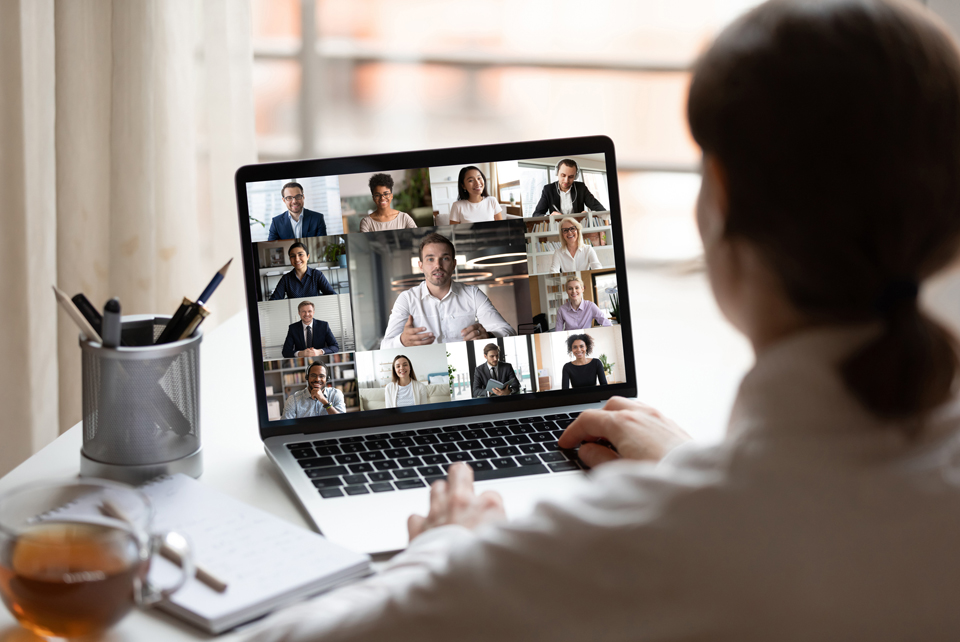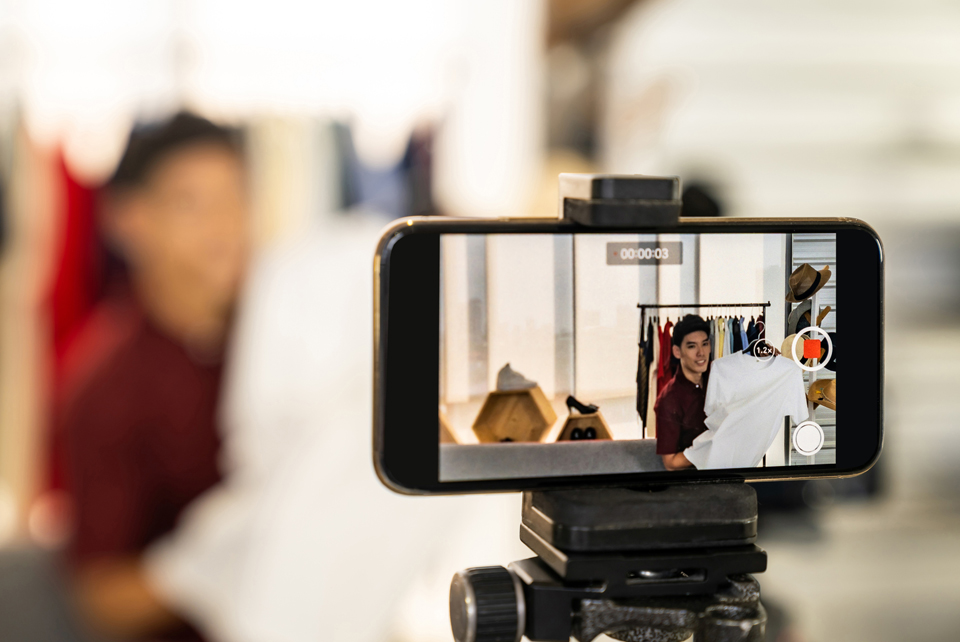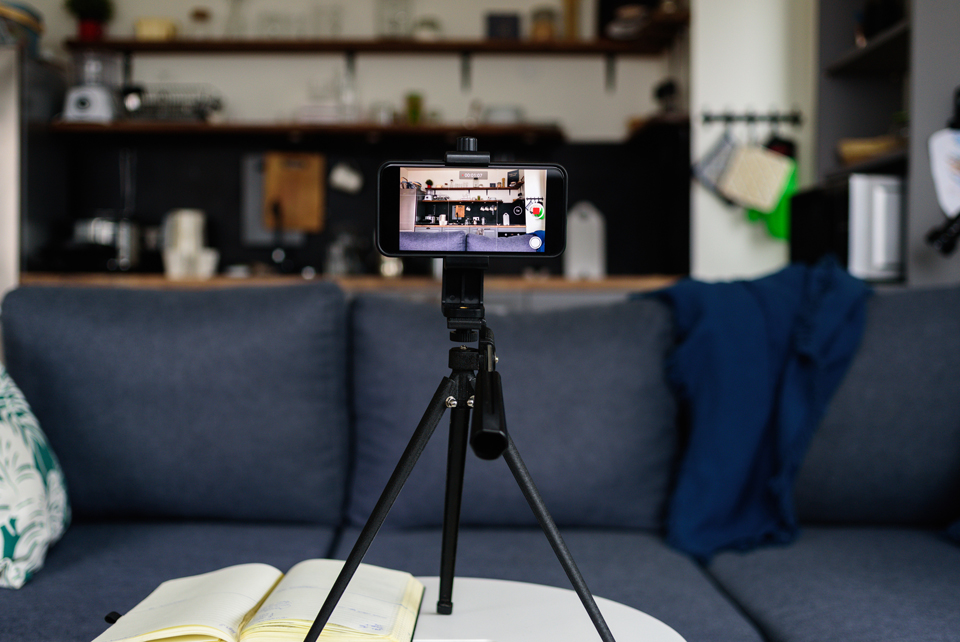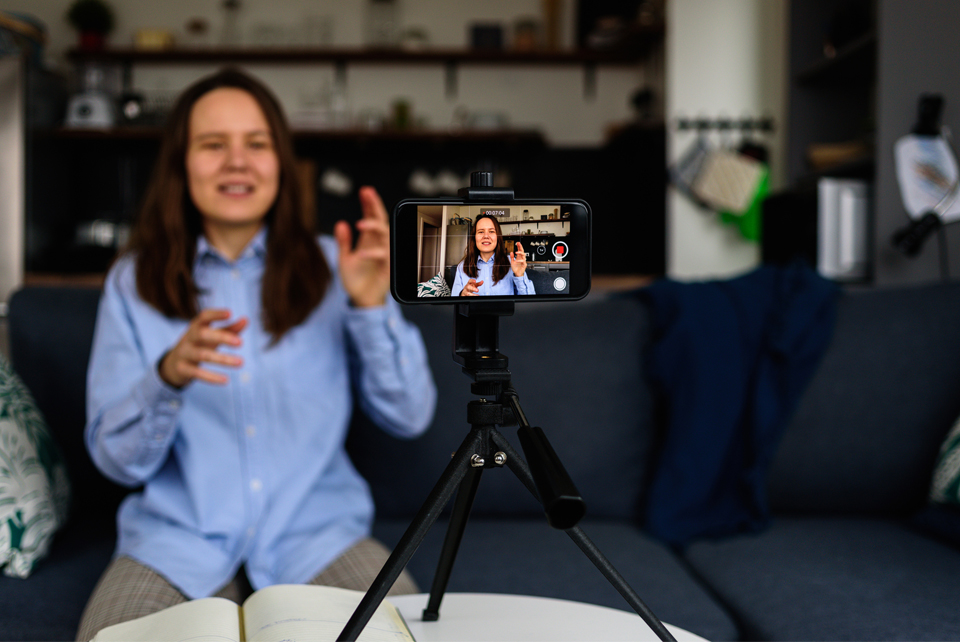Video marketing was up 63% over the past year, resulting in a total of 81% of businesses recognising video content as an essential part of their digital marketing strategy. Research goes on to reveal that 72% of customers would rather learn about a product or service by way of video*. These stats all point in one direction – videography is here to stay. But how, as a small business, do you produce quality video content that accurately represents your brand? Lockdown restrictions and tightened budgets have made this dilemma even more prevalent. Should you, rather are you allowed to hire a videographer under current restrictions? If the team can’t get together in your usual working space, how can your service or product and company be accurately portrayed?
Step forward the smartphone. Whilst it may not be the answer to all our video requirements, the smartphone can certainly produce quality content to keep our social feeds updated with engaging posts and keep our brand ‘alive’ in the minds of our target audience and existing client base at a time when face-to-face interactions may not be possible.
Since the advent of the smartphone, photography and filmmaking have truly been democratised - super computers wrapped up in tiny packages that nestle in your pocket, holding infinite creative possibilities. Not only are they powerful image capture devices but editing machines too… Shoot -Edit- Upload, all from one piece of technology.
Alongside this creative leap forward, came high quality video conferencing. Whether out in a park or sat on the sofa, the possibility to connect with work, family and friends became mobile and instant.
Over the past 12 months, more and more of us have had to utilise available tech to keep in touch with the outside world, create credible content for our brands, deliver new business pitches and hold meetings. In this post, I’d like to share my thoughts on how to maximise the most from these available technologies, particularly looking at using them for work.
So, what is the most important factor in communicating successfully via available phone cameras or video conferencing apps?
You!
It seems obvious, but we can so often get caught up in the drama of making the tech work or battling the feelings of being ‘under a spotlight’ that we forget to be ourselves.
The more authentic we can be with others, the more successful we will be in showing the best of our abilities, representing our brand and communication. Over the past 12 months in particular, people understand that technology can misbehave, that children can burst in through doors unexpectedly or, as has just been witnessed by millions online, high level lawyers can appear with giant cat head filters on their Zoom video whilst talking to a judge… so embrace the technology but don’t let it dominate your communication. The more relaxed you are with the process, the better your focus will be on the job at hand; being your authentic self. Make yourself familiar with the camera or app you are using, find time to experiment with settings and how to change them back and forth. A little practice will go a long way.
There are numerous practical tips and tutorials online for filming from home, but here are a few I believe will serve you well on your self-filming odyssey:
First and most important is to BE YOURSELF (last time I’ll mention it, I promise.)
Where possible, try to have fun with the process. Listen to music you love before recording or watch a video that makes you laugh. Whatever works for you and helps you relax and allow you to treat the process as fun.
If you’re going into a conference, remind yourself that most people may well be as uncomfortable being on-screen as you are. Be kind to yourself.

Be physically comfortable. Wear appropriate clothing for the tone of the video, but make sure you are comfortable. This small step can greatly help with feeling relaxed on camera.
A technical point is clothing that have tight patterns, herringbone/black and white check, for example, are generally best avoided as they can do weird things with video, depending on the camera/device recording.
Your environment
If possible, plan filming for when your environment is quiet and you are able to fully concentrate on the task at hand. Before starting, sit and listen if there are any invasive noises; humming electrics, barking dogs, reversing trucks, creaking radiator sounds… the list goes on. Clearly with video conferencing, this is more of a challenge and may not be possible as you’ll be ‘Live’, so do your best in the circumstances you find yourself in.
Consider your room’s background; is it a bit plain or is it distracting? Is there anything in the shot that you’d rather not be seen, family photos etc.?
Ideally, choose a room that is well lit, creating even lighting on your face. Soft diffused light will create a more flattering look than harsh light which will likely create strong shadows on you or your background.

If you need to use lights, then try moving them around and pointing them away from you and ‘bounce’ the light off a piece of white card or a wall so the shadows are eliminated or softened. If you plan to film a lot from home, then investing in a Ring Light can help. This illuminates you with a flattering soft, clean light.
Window light on an overcast day can create a diffused, even light. This can be used by facing the window (if the strongest light is behind you your camera will struggle to balance the contrast and you’ll appear as a silhouette).
Whichever method you use, always check for shadows on your face. If you wear glasses, consider harsh reflections also, from a computer screen for example.
If your environment is too dark, the video will have an unflattering grainy look to it and little can be done to change this in the edit. So, a bit of time considering your lighting is well worth it.
Your camera phone/device
These tips mainly lean towards a camera phone, but the principles apply with video conferencing also.
The camera should be orientated horizontally and ideally be on a tripod or supported on a flat, level surface. The same goes for your laptop/tablet - make sure you have an even horizon line.
Phone cameras vary of course, but a recording to be shared with colleagues will be good quality with the following settings:
- Recording size should be set to 1920x1080 (1080p) or higher.
- Frames per second to 25 (25fps) or 30 (30fps).
The camera on the rear of the phone gives a better image. If you’re filming alone, it might be better to use the front facing camera which, although lower in quality, will allow you to see yourself.

If you’re feeling adventurous and are on your own, use the rear camera by putting a mirror behind it so you can see the phone screen.
Make sure the camera lens is clean. This is often overlooked and dirt on the lens will add light distortion amongst many other unflattering elements.
When you’re happy with what you can see on the phone screen, you will ideally lock the focus/exposure/colour temperature. For example, on an iPhone you do this by simply touching the area of the screen you want to focus on and wait until the yellow square appears on the screen and locks.
If on your own, you can put a white pillow on the chair as a placeholder whilst you lock the focus. Start the phone recording and then remove the pillow from the chair and begin talking to camera. The white is important as it sets the camera’s white balance and stops any colour shifting when recording.
Make sure the microphone on the phone or device isn’t obstructed and the sound level is coming through clearly. The best way to confirm this is to shoot a little test clip and check back that everything is recording OK. Many of the conferencing apps helpfully prompt you to test your audio before entering a chat or recording.
I hope these basic tips have been of help and when you come to use the incredible technology at your disposal, you’ll be able to let the tech melt away and focus on being your true self on camera. Authenticity in communication always.
Would you like to create more video content or need help developing your content strategy? Contact our team to see how we can help.
* : Research from HubSpot
